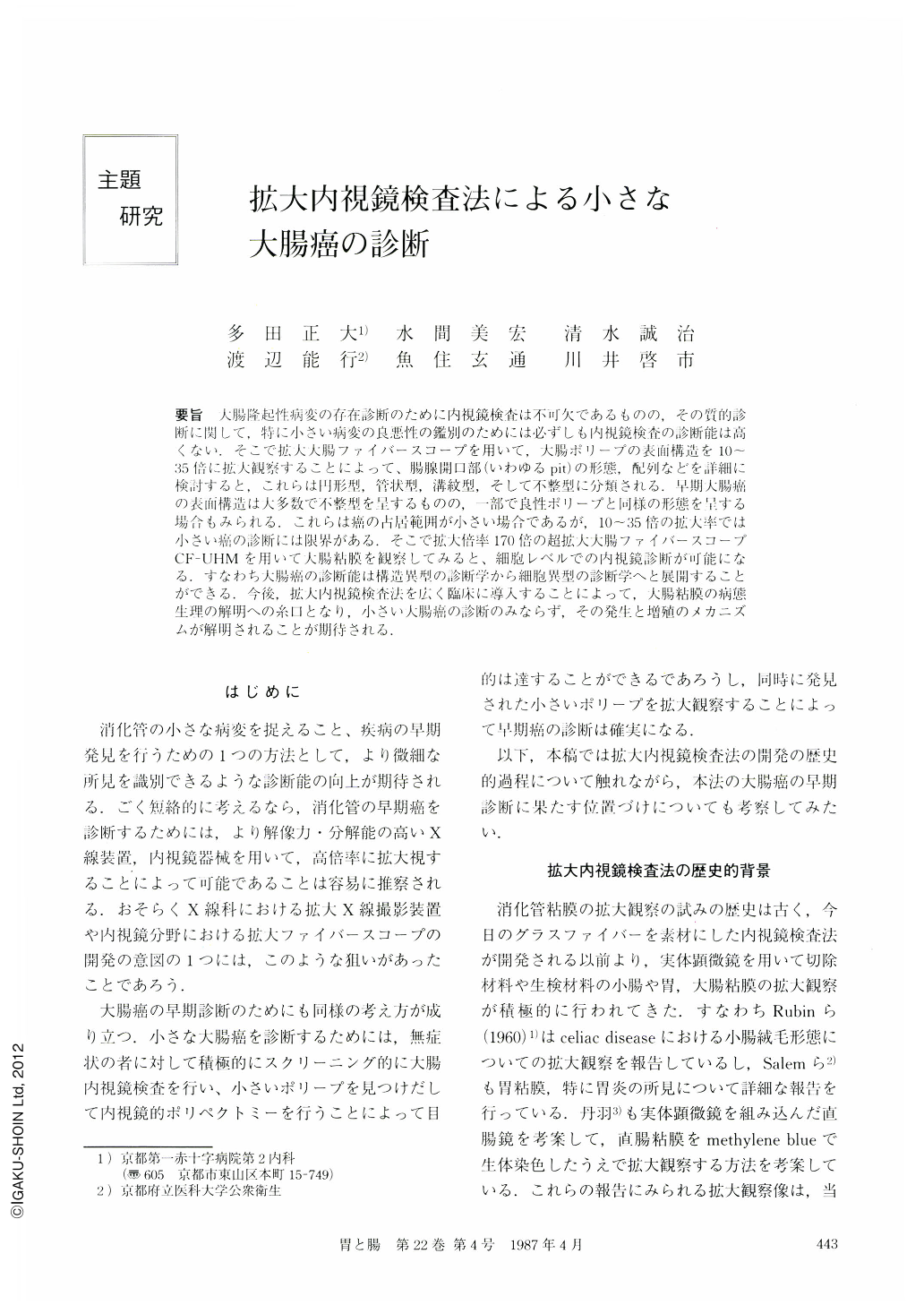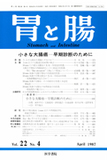Japanese
English
- 有料閲覧
- Abstract 文献概要
- 1ページ目 Look Inside
要旨 大腸隆起性病変の存在診断のために内視鏡検査は不可欠であるものの,その質的診断に関して,特に小さい病変の良悪性の鑑別のためには必ずしも内視鏡検査の診断能は高くない.そこで拡大大腸ファイバースコープを用いて,大腸ポリープの表面構造を10~35倍に拡大観察することによって,腸腺開口部(いわゆるpit)の形態,配列などを詳細に検討すると,これらは円形型,管状型,溝紋型,そして不整型に分類される.早期大腸癌の表面構造は大多数で不整型を呈するものの,一部で良性ポリープと同様の形態を呈する場合もみられる.これらは癌の占居範囲が小さい場合であるが,10~35倍の拡大率では小さい癌の診断には限界がある.そこで拡大倍率170倍の超拡大大腸ファイバースコープCF-UHMを用いて大腸粘膜を観察してみると,細胞レベルでの内視鏡診断が可能になる.すなわち大腸癌の診断能は構造異型の診断学から細胞異型の診断学へと展開することができる.今後,拡大内視鏡検査法を広く臨床に導入することによって,大腸粘膜の病態生理の解明への糸口となり,小さい大腸癌の診断のみならず,その発生と増殖のメカニズムが解明されることが期待される.
Several studies have examined the mucosa obtained at operation or autopsy with dissecting microscope, but it was not until the development of the magnifying colonoscope that the individual minute mucosal changes came to visualized. The focusing system of magnifying colonoscope enabled us to have close-up views up to 35 times normal image.
The minute structures of polypoid lesions, observed by magnifying colonoscope are classified into four categories according to the shape and arrangement of the pits: round, tubular, sulcus and irregular. Small metaplastic polyps belonged to the round type, while adenomatous polyps belonged to the round, tubular or sulcus type. They retained the regularity in shape and arrangement. On the other hand, most of the early cancers bolonged to the irregular type and were clearly differentiated from metaplastic or adenomatous polyps. Several cases of early cancer, however, belonged to the tubular or sulcus type, as did the benign adenoma. Thus, diagnosis of early or diminutive cancer remained problematic and further improvements in magnifying colonoscopy were waited.
A new magnifying colonoscope, type CF-UHM, with a capacity of 170 times magnification, was developed to overcome such a problem in identifying early cancer. The minute surface structure of carcinomas was quite different from that of benign polypoid lesions or normal flat mucosa. Regular structures have completely disappeared with nuclei being irregular in both arrangement and size in early cancer. Thus, this ultramagnifying colonoscope made it possible to more accurately diagnose colon cancer in its early and/or diminutive stage. It is further expected that more diminutive cancers will be diagnosed at the stage of cellular atypism without structural atypism.

Copyright © 1987, Igaku-Shoin Ltd. All rights reserved.


